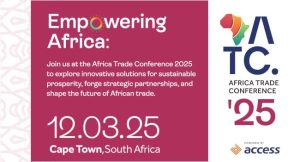
As much as we strive to make purpose a major driving force for work, most people are first driven by their needs, which change as they move up the hierarchy of needs. In a Netflix series titled The Good Doctor, I recall Dr Shaun Murphy being asked why he wanted to become a doctor during his residency interview. Although the neurodivergent character’s purpose was to save lives, having lost his brother and a pet, he also wanted to be able to own a TV set.
Q: “An effective wellness programme should shift employees’ focus from money to career-building and impact-making, as wealth automatically follows.”
Needs are valid, and wants can be easily justified. However, today’s global economic reality is subjecting employees to amplified financial distress due to the rising cost of living, high medical bills, job insecurity, and increasing debts with heavy interest rates. In the face of this pressure, our youths are beginning to lack the depth required to hone specialised or technical skills. Young workers would rather create and juggle content without a clear career pathway through freelancing as they try as much as possible to avoid commitments. This new development is a dangerous place for the global workforce in any future, near or far.
Therefore, organisations must include targeted financial wellness programmes in their employee benefits. A robust workplace wellness programme must blend financial literacy with financial competency for proper money management. This mix is necessary because a fat bank account doesn’t necessarily translate to financial wellness, nor does a lean account mean financial doom. Hence, financial wellness interventions are not advocating money, money, or more money but instead seeking ways to alleviate the pressure or stress that may arise from financial worries or woes. An effective wellness programme should shift employees’ focus from money to career-building and impact-making, as wealth automatically follows.
The whole essence of financial wellbeing can be easily carved out of some statements made by P.T. Barnum, the author of The Art of Money-Getting. Paraphrased here, he said, “Choose the right vocation in a proper location and stay in good health. Wealth will automatically follow. However, don’t forget to advertise.” These statements are fundamentally the bedrock of financial wellbeing, if you ask me.
Before designing and developing such a programme that will not only meet all requirements but also capture the essence of financial stability, the following four key steps must be considered for effectiveness and efficiency:
Conduct employee-need assessment: There are a myriad of programmes that can be deployed to boost morale, reduce absenteeism, increase engagement, increase productivity, and attract or retain talent. However, to ensure effectiveness and efficiency, a qualified programme developer must assess employees’ needs. Moreover, because needs differ among individuals based on demographics, circumstances, and personal goals, an assessment is required to map out strategies, make a business case, and set objectives.
Conduct organisational-need assessment: Aside from identifying the financial needs of your workers, performing an internal audit of the organisation is also essential. It will reveal more strategic reasons for the programme and evaluate what is required to design, develop, and implement it. This need assessment improves corporate goals and values and clarifies the business environment regarding budget, resources, human capital, demographics, existing programmes, participation, and impact.
Identify challenges: As challenges in different organisations vary, so do the problems in various units or locations of an organisation. Therefore, it is critical to identify these problems and mitigate against any current, looming, or envisaged risks.
Use secondary data and research: The importance of using historical data and external information to compare, juxtapose, and revalidate what currently exists and is truly achievable cannot be overemphasised. This move gives the programme a more solid footing by combining it with data obtained through surveys, discussions, and interviews.
Targeted wellness programmes are developed to help employees build a healthy relationship with their finances. Workplace financial wellness programmes can cover a wide range of concerns, including student debt repayment, financial goal setting, bad credit ratings, poor spending behaviour, disability and unemployment benefits, bankruptcy, and long- and short-term financing. As I wrote in an article a while back, a well-thought-out corporate wellness programme can serve as a competitive advantage and a corporate social responsibility tool. It should be a step or two ahead of the conventional benefits. How would it sound for a big financial institution to roll out mortgages, mortgage refinancing, or even build estates for its employees to own through its bank loans?
Bottomline remains that Employee Wage Access (EWA) is an employee assistance program that makes earned income accessible to workers before payday to meet contingencies and emergency needs without any interest burden. If you want to know more, email me at oopaleye@gmail.com with your inquiries. I look forward to hearing from you.
Olayinka Opaleye is a Wellbeing Specialist and Corporate Wellness Strategist from Lagos. She can be reached on 09091131150 or via www.linkedin.com/in/olayinkaopaleye.









